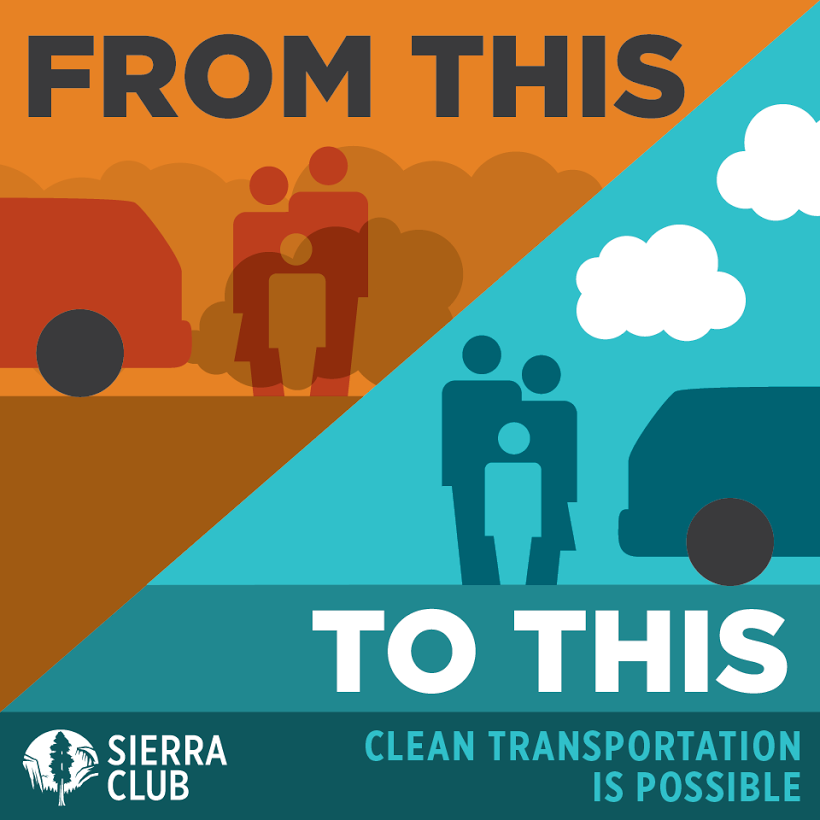In August 2009, the Obama Administration proposed groundbreaking fuel efficiency standards for passenger vehicles that marked a remarkable step toward reducing dangerous greenhouse gas emissions. Standing with him were 13 of the nation’s major automakers, representing 90 percent of the total vehicles sold in the U.S. Their support of these standards showed the automotive sector’s commitment to invest in clean technology and curb hazardous pollution. But as soon as the midterm review of these standards began, those very automakers began trying to pump the brakes on fuel efficiency standards. Claiming that the standards are unrealistic, they’ve begun looking for loopholes in the system and ways to cut corners.
But these standards are reachable and working -- our cars are cleaner and more efficient than ever before. Vehicle efficiency standards are already making a difference. From minivans to sedans to pickup trucks, fuel economy has increased across the board. Thanks to direct-injection engines, start-stop technology, more efficient transmissions, weight reduction, and other technology innovation, automakers have the technology available not only to achieve these standards, but to beat them, leaving our air cleaner and our climate healthier.
We can’t let these standards stall. We have to accelerate our climate action. That’s why over a quarter of million Americans families are standing up to automakers. After the Environmental Protection Agency and National Highway Traffic Safety Administration released a Technical Assessment Report (TAR), the first step in the midterm review process, more than 280,000 Americans submitted comments in favor of strong fuel efficiency standards. By the end of the comment period on Monday, more than 40,000 people on behalf of the Sierra Club, and more than a quarter of a million people on behalf of a diverse coalition submitted comments in support of strong fuel efficiency standards.
Together with the Clean Power Plan, the Obama administration's clean car standards, agreed to by automakers and the EPA in 2012, are the most ambitious step the United States has ever taken to reduce carbon and other types of air pollution. By raising average fuel economy of passenger cars and trucks to 54.5 miles per gallon by 2025, these standards will significantly reduce oil use and cut dangerous climate pollution by as much as 6 billion metric tons by 2025—the equivalent to carbon pollution from 150 typical coal-fired power plants for an entire year. That's more than the total carbon emissions from the United States in 2010. Along with climate pollution, these standards also cut back on the other dangerous pollutants like toxics, smog, and soot that come out of our cars’ tailpipes.
Despite low gas prices, a recent Consumers Union study shows that there is strong public support for automakers to improve fuel economy for all types of vehicles. When asked which attributes could be most improved in their current vehicle, more respondents selected fuel economy over several other characteristics like horsepower, comfort, connectivity, safety, and reliability among others. In fact, fuel economy was the top concern for nearly all drivers. An NRDC report shows that more than three quarters of Americans believe the federal government should raise fuel economy standards for automakers. American families know that to keep our air clean and our climate safe, we need to put fuel efficiency standards in the fast lane.
Automakers can claim consumers don’t want efficient cars, but sales numbers show otherwise. Since the standards were put in place in 2012, car sales have reached record highs. Strong fuel efficiency isn’t only in the best interest for our health and climate, it's in the automaker's’ best interest to keep their profits on the rise.
Efficiency-driven sales are good for the economy, too. Since the recession and a rise in fuel efficiency, the auto industry has added 700,000 jobs, according to the Blue Green Alliance. These jobs include more than 300,000 added jobs in motor vehicle and parts manufacturing, and 380,000 added jobs at auto dealers. This brings total manufacturing employment in the auto industry to 930,000. That’s a nearly 50 percent growth since 2009, and brings employment at auto and parts dealers to its highest level ever at 2 million jobs. Increases in fuel efficiency helped auto manufacturing jobs reach 40 percent of all net jobs added in U.S. manufacturing since the recession.
Now is not the time for automakers to backpedal on climate protections. We need to accelerate fuel efficiency standards to reduce our dependence on dirty oil that pollutes our air and threatens our climate. Nothing short of the health of our families, our climate, and our economy is at stake.
